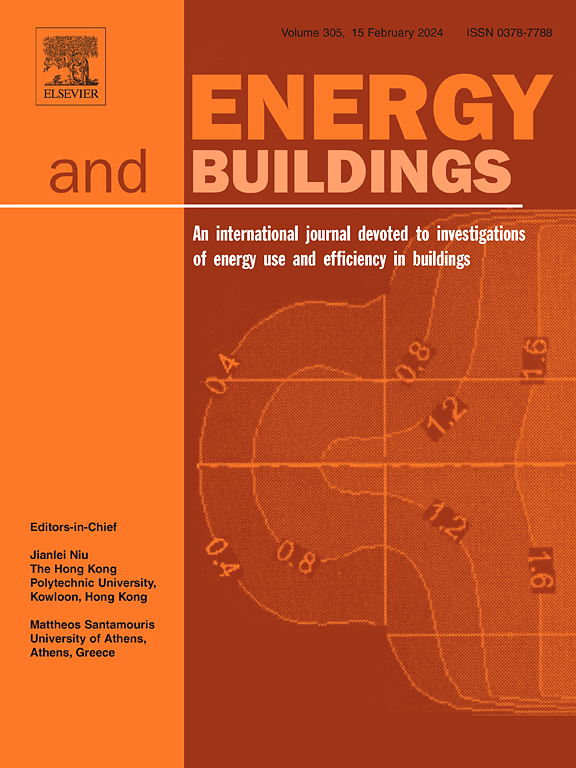A two-stage probabilistic flexibility management model for aggregated residential buildings
IF 6.6
2区 工程技术
Q1 CONSTRUCTION & BUILDING TECHNOLOGY
引用次数: 0
Abstract
The increasing integration of renewable energy resources into power systems introduces variability and uncertainty, challenging the availability of flexible resources required to maintain grid stability. Traditionally, flexible ramping relies on conventional generation with fixed capacities, highlighting the need for alternative flexible resources. This study focuses on demand-side resources, such as aggregated residential buildings forming collaborative energy ecosystems with dispatchable flexible assets, as a promising solution to address these challenges. This paper proposes a two-stage probabilistic model for managing the flexibility of aggregated buildings, focusing on maximizing ramping capacity from energy storage systems, thermal loads, and shiftable appliances during intra-day periods. In the first stage, buildings operate normally, optimizing energy exchange based on electricity prices. In the second stage, buildings coordinate in response to aggregator signals by imposing a strategy of maximum anticipation or delay to manage energy exchange. The aggregator then assesses the total potential ramping capacities for market participation. Numerical results and sensitivity analyses demonstrate the model’s effectiveness in accurately assessing aggregated ramp capacity. The findings reveal that the proposed approach significantly enhances residential building flexibility, providing accurate assessments of their contribution to grid stability and enabling efficient participation in flexibility markets.
求助全文
约1分钟内获得全文
求助全文
来源期刊

Energy and Buildings
工程技术-工程:土木
CiteScore
12.70
自引率
11.90%
发文量
863
审稿时长
38 days
期刊介绍:
An international journal devoted to investigations of energy use and efficiency in buildings
Energy and Buildings is an international journal publishing articles with explicit links to energy use in buildings. The aim is to present new research results, and new proven practice aimed at reducing the energy needs of a building and improving indoor environment quality.
 求助内容:
求助内容: 应助结果提醒方式:
应助结果提醒方式:


